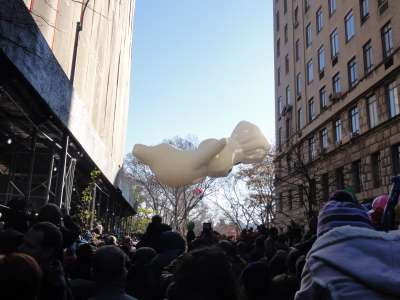Karl
Marx wrote in 1843 "Religion is the opium of the people" ("Die
Religion ... ist das Opium des Volkes"). This statement became paraphrased
in many forms including the popular “Sport is the opium of the people”. As the
holidays approach, a paraphrase Karl would not object to, is
“shopping is the opium of the people". The beginning of the holiday season,
is announced by the bombarding by countless ads in many form and format for
black Friday and cyber Monday; it also marked by the annual Macy's Thanksgiving Day Parade (started in 1924),
which I cannot escape living a few blocks away from the balloon inflation and
beginning of the parade.
Cheering crowds start flowing in the neighborhood from
the Wednesday afternoon; even this year, in spite of the economical crisis and
Occupy Wall Street protest few miles away, the shopping and its celebration
seems to be untouched in the hyperrealistic Macy’s parade, where inflated thirty-foot high balloons float (often face down) among the imponent Central Park West trees and buildings. The inflated balloons, are quite a metaphor for the current economy but hopefully will not burst in the crowds.


























































